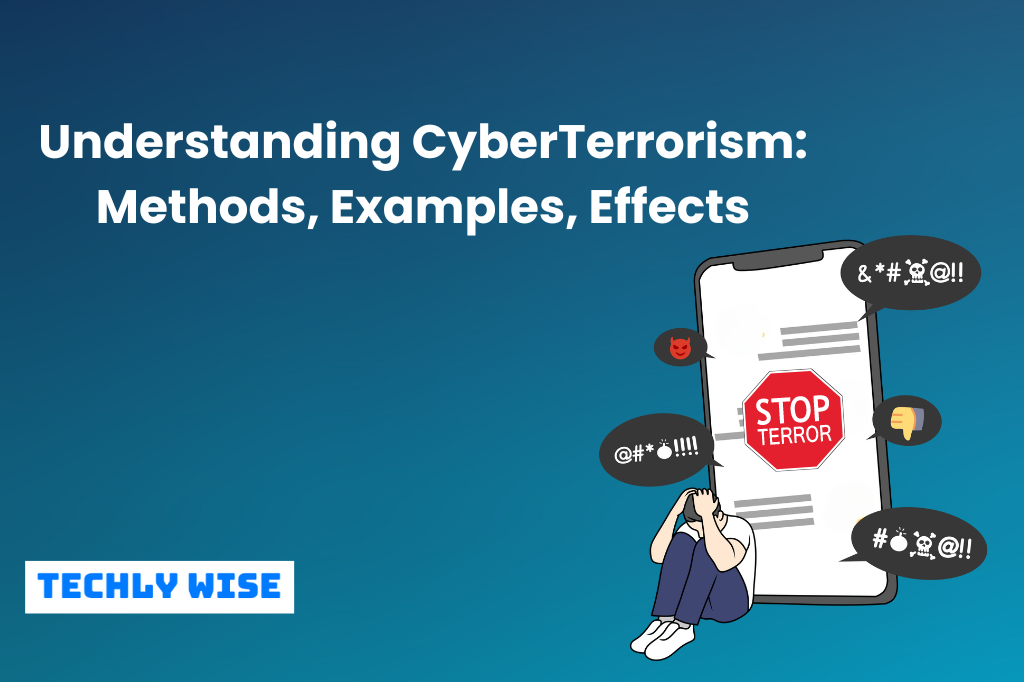
Any deliberate, politically motivated attack on information systems, software, and data that either threatens or incites violence is referred to as “cyberterrorism.” When a cyberattack produces fear or intimidation among the target population, the definition may be widened. Attackers commonly achieve this by damaging or degrading crucial infrastructure. A cyberterrorist strike, according to the FBI, differs from a typical virus or DoS attack.
Less dangerous attacks may qualify as acts of cyberterrorism, according to some organizations and experts. These additional organizations claim that attacks with the intent to disrupt or advance the political goal of the perpetrators may be considered cyberterrorism. The fundamental motivation for cyberterrorism attacks is to disturb or injure the victims, even if the attacks do not result in bodily violence or extremely severe financial harm.
Different security organizations have different viewpoints on cyberterrorism and the participants. Cyberterrorism, according to the FBI of the United States, is any “Subnational groups or covert agents may launch a deliberate, politically motivated attack against information, computer programs, computer systems, and data, which leads to violence against noncombatants.”
Many cybersecurity professionals think an incident should be classified as cyberterrorism if it causes bodily harm or fatalities. Targets for cyber terrorists might include the financial sector, military sites, power plants, air traffic control centers, and water systems, according to the U.S. Commission on Critical Infrastructure Protection.
CyberTerrorism Methods
The objectives of cyberterrorist groups include creating widespread unrest, interfering with crucial infrastructure, supporting political action or hacktivism, and even causing fatalities or serious physical harm. Cyberterrorists employ a variety of techniques.
- Attacks known as advanced persistent threats (APTs) involve intricate and targeted network infiltration techniques. Once inside the network, the attackers attempt to steal data while remaining undetected for a while. APT assaults frequently target organizations with highly valuable information, including those in the national defense, financial sectors, and manufacturing.
- DoS attacks aim to block authorized users from using specific computer systems, devices, or other computer networks. These attackers frequently target governments and vital infrastructure.
- The goal of hacking, or obtaining unauthorized access, is to steal vital data from organizations, companies, and governments.
- Malware known as ransomware keeps data or computer systems hostage until the victim pays the demanded ransom. Additionally, some ransomware attacks exfiltrate data.
- Phishing attempts to gather data from a target’s email, and then use that data to gain access to systems or steal the victim’s identity.
Examples of CyberTerrorism
Cyberterrorist actions employ networks, computer servers, and other hardware that is connected to the public internet. Secure government networks and other restricted networks are regular targets.
Cyberterrorism examples include the following:
Major websites are being interrupted
The goal in this case is to annoy the general public or block access to websites with information the hackers find objectionable.
Cyberespionage
Governments frequently participate in or encourage cyber espionage. They want to spy on rival nations to learn more about troop movements and war preparations.
Unauthorized Entry
Attackers routinely try to interfere with or change communications that control military technology or other important equipment.
System Disruptions In Vital Infrastructure Systems
Threat actors attempt to cripple or disrupt cities, bring about a public health emergency, jeopardize public safety, or unleash a deadly panic. A water treatment facility, a pipeline, an oil refinery, or a fracking operation might all be the target of cyber terrorists.
Major Attempts And Attacks By Cyberterrorism
There are several methods and diverse goals used in attacks against command-and-control systems, communication networks, data repositories, and computer networks. The bulk of cyberattacks and efforts to enter computer networks go undiscovered or garner very little attention, although many cyberterrorism attacks are extensively documented. These attacks and efforts rank among the most harmful acts of cyber terrorism in recent memory.
Business Insider claims that the information technology company SolarWinds was the victim of a hack that remained unnoticed for several months. Many government agencies as well as private companies, including security firm FireEye, were spied on by hackers who are widely believed to be based in Russia. In April 2021, the U.S. government sanctioned Russia as a result of the attack.
- According to an explanation on ZDNet, the IT services company Kaseya reported in July 2021 that it had fallen victim to a strike by the REvil ransomware.
- The mobile service company T-Mobile reportedly disclosed that it had been the victim of a cyberattack in August 2021 that had exposed the personal information of 13 million users and an additional 40 million account applications.
- According to Bloomberg, the insurance company CNA Financial reportedly paid hackers $40 million in March 2021 after falling victim to a ransomware attack that locked up the business’s computer networks and seized data.
Read Cyberwarfare: Objectives & Variants.
Types of CyberTerrorism
Cyberterrorism is the purposeful destruction, disruption, and/or intimidation of individuals using computer networks or systems. There are the following types of cyberterrorism:
- Malware
- Advanced persistent threat
- Attacks by the middleman
- Phishing
- Breached data
- Ransomware
- DDoS attacks
Advanced Persistent Threat
Advanced persistent threats launch sophisticated, deliberate intrusions aiming to gain access to a network. After breaking into the network to take data, the attackers avoid detection. APT attacks frequently target highly valuable information, such as that used in the banking industry, national defense, and industry.
Malware
Malware is harmful software that infiltrates computers and networks, compromises data, and either hurts the victim or generates profit for the attacker. Popular techniques for spreading malware include attachments, phishing emails, duplicitous installation programs, unethical adverts, and infected USB devices.
Ransomware
Malicious ransomware software typically demands Bitcoin payment before users can access their files and other resources. A phishing fraud or a more skilled spear-phishing attempt, which uses social engineering to trick the victim into opening the file and carrying out the attack, is a common method of distributing ransomware.
Phishing
Phishing is an attack that involves sending a phony email to a target to get them to run malicious software that steals personal information or does other harm.
Breached Data
A data breach occurs when a hacker gains unauthorized access to personal or business data. The most frequent targets of data breaches are people’s private information and valuable data, including user credentials, consumer databases, financial transactions, and email addresses.
Attacks by the Middleman
In a man-in-the-middle attack, similar to spyware, the attacker hides on the victim’s computer or network and records and logs all of the data they access or transfer. The software records financial information, user IDs, passwords, and personal identification numbers. To prevent victims from accessing their accounts and devices, attackers routinely change the victims’ IDs and passwords.
DDoS Assaults
Hackers use DDoS attacks to try and restrict innocent users from accessing specific computers, devices, or other computer networks frequently. Therefore, these attackers go after important infrastructure and governments.
Effects of CyberTerrorism
Cyber terror attacks have led to organizations and individuals facing the escalating costs of defending against increasingly sophisticated assaults. Consequently, they become more susceptible to the financial burden of ransomware payments and data recovery following an attack, as ransomware continues to grow in popularity.
The World Economic Forum has recognized the following five crucial cyber-security challenges for governments, corporations, and individuals: The prevalence and sophistication of cyberattacks are rising, posing a serious threat to individuals, companies, and governments.
- Everyone is more vulnerable to attacks on governmental services, healthcare systems, transportation networks, and communication systems as a result of the growing dependence on technology and the concurrent rise of cybercrime and espionage. National borders are vanishing and the lines separating the physical and digital worlds are fuzzier and fuzzier.
- The level of knowledge in the data security sector can’t keep up with the methods and tools that hackers are developing. Instead of preventing cyberattacks, this forces businesses and individuals to scramble to defend themselves.
- Businesses and people are relying more on third parties whose accountability is under question as a result of rising industrial-financial convergence.




